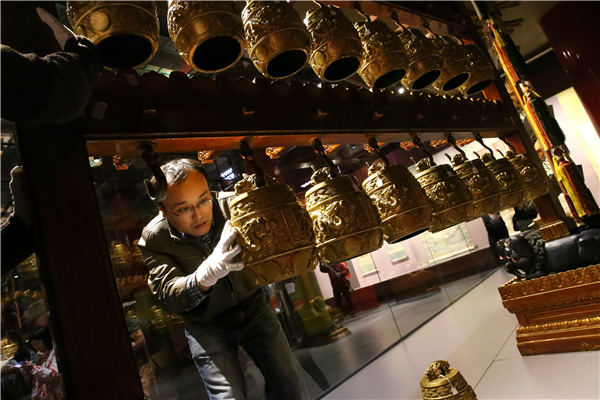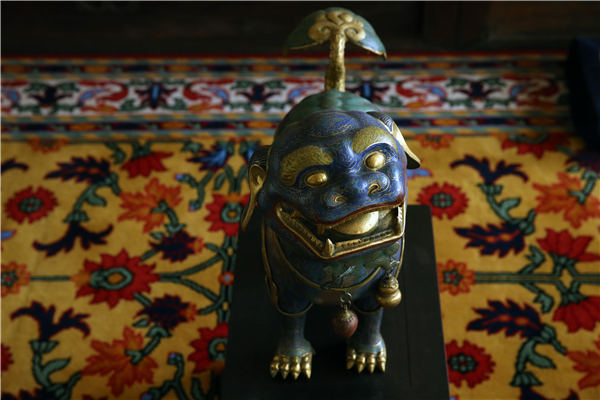
The musical instruments used for operas performed at royal birthdays.

From the luxurious bedrooms of the mothers of kings to personal worship areas filled with Buddha statues, the Palace Museum is showing us a different side of imperial China. Deng Zhangyu reports.
Visitors to the Forbidden City can now get a glimpse of how the mothers of emperors lived. They can view luxuriously decorated bedrooms and a private worship hall among other treasures of the Palace Museum in Beijing.
The Cining Palace complex in the western part of the Forbidden City was opened on Saturday to the outside world for the first time as part of the celebrations of the 90th anniversary of the museum.
To celebrate the birthday, more than 1,000 treasures from the royal families were displayed in eight shows in four newly opened areas: the Cining Palace complex for emperors' mothers, wings of the Meridian Gate, East Prosperity Gate and the Baoyun Building, a warehouse built in 1914 to store treasures.
Shan Jixiang, museum director, says most of the precious items on display are being shown for the first time. He says the shows, which took three years to prepare, offer a rare opportunity for visitors to learn more about the emperors and their families, such as the women's residences that are often featured in films.
"There are even ghost stories about the women's residences in the Forbidden City. Now visitors can see that the stories are just tales," says Shan.
One of areas opened up is the Shoukang Palace, which forms a part of the Cining Palace complex.
The Shoukang Palace, which was the residence of Empress Dowager Chongqing, the mother of Emperor Qianlong (1711-1799), has been restored.
The bedrooms, the rooms where she met her son and a private worship hall offer visitors a peek into her daily routine.
Chongqing lived till the age of 86 and her son, known to be a good ruler, showed great love and respect to her.
The emperor did plenty of calligraphy for his mother and held fancy birthday ceremonies for her. More than 200 items and treasures on display at the Shoukang Palace give glimpses into her daily life. They include the formal clothes she wore while meeting subjects, a rosewood closet full of exquisite jewelry and big red coral ruyi (a S-shaped ornament believed to be a symbol of good luck).
She also had a private garden as big as a football field, in which a private hall to worship the Buddha was located. There are more than 40 worship halls dedicated to the Buddha in the Forbidden City. But the one for her has more than 1,000 golden finger-sized Buddha statues.
Wen Ming, director of the religion department at the museum, says: "It's the first time that a worship hall in the Forbidden City is open to the public. In fact, many emperors' wives and concubines have worship halls in their residences. They all believed in Buddha."
Besides the worship halls, the Cining Palace has more than 500 sculptures on display, mostly large-size Buddha statues. Some of the sculptures are more than 2,200 years old. The sculptures are made of stone, wood, silver, gold and jade.